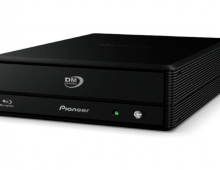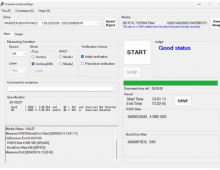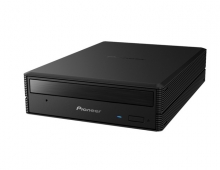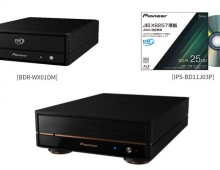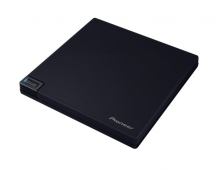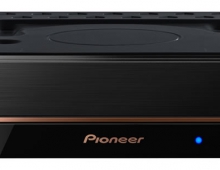Pioneer BDR-101A Blu-Ray Drive Preview
3. BD File System, Digital Errors Measurement
Review Pages
2. BD-R, BD-RE Format Information
3. BD File System, Digital Errors Measurement
4. BD-R/RE Media
5. BD-R/RE Data Burning
6. BD-R/RE Reading
7. First Impressions
Blu-ray Disc File System (UDF)
The Universal Disk Format (UDF) specification, developed by the Optical Storage
Technology Association (OSTA), is the predominant file system used for optical
discs, eliminating any dependence on the media type, hardware platform or operating
system, while allowing interchange between computer systems.
UDF (Revision 2.5) has been developed, taking into consideration the needs for next generation
larger capacity media.
Blu-ray specifies the use of UDF 2.5 as a convergent friendly format for both
PC and CE environments, to enable seamless interchange between PC Blu-ray drives
and CE Blu-ray recorders. Specifically, the Blu-ray Disc Format part 2 File
System Specifications, defines the requirements for the use of the UDF file
system on Blu-ray Rewritable discs, Blu-ray Read-Only discs and Blu-ray Recordable
discs.
All Blu-ray discs have the following characteristics that impact UDF; the logical sector size is 2k bytes and the ECC block size is 64k bytes. The requirements for the UDF volume and file structure are individually defined in different specifications for each media type – BD-RE, BD-R and BD-ROM.
Blu-ray Rewritable discs are non-sequential recording media, where read-modify-write
and defect management operations are performed by the drive unit, eliminating the
need for the Virtual Allocation Table and Sparing Table in the file system.
Blu-ray Recordable discs also include defect management, eliminating the need
for the Sparing Table in the file system. The defect management system allows
for the replacement of defective clusters as well as enabling the logical overwriting
of previously recorded user data.
Digital Errors on BD
Assessing the quality of BD discs introduces new approaches to those accepted for DVD and CD and we look here at jitter, the most commonly understood quality metric.
Jitter, the difference between the idealized run lengths (pit and lands) and the actual detected run lengths, has been used in CD and DVD as a primary metric for determining the quality of the replicated disc.
When using a PRML approach, it has not been able to link regular (as used in CD and DVD) jitter directly to the quality of the replicated disc. Therefore, different approaches have been taken to relate the output signals to disc quality.
BD actually does use a form of Jitter measurement, but the data is first passed through a limit equalizer to improve signal quality. A limit equalizer is employed upon the signal. This is simply another method of boosting the signal of the smallest features (2T pit and land). The advantage of the limit equalizer, compared with the conventional equalizer used for DVD, is that it can boost the signal of the smallest features without increasing the ISI. After the signal has been processed through the limit equalizer, jitter can be measured in a conventional manner, as with DVD. It is very important to note than this approach is used only for evaluating disc quality. For data recovery, PRML has to be used.
As can be seen, the measurement issues for the next generation formats go substantially beyond simply working with smaller features. The coding concepts, the relationships between measurements and playability, and the links between measured effects and their manufacturing-process causes, are all unique.
So, for BD, we have Random Symbol Error Rate (R-SER), Burst Error Max, and Max total length of burst errors.
CDRInfo will present the first digital error measurements on the recorded BD-R and BD-RE media in the final version of this review.
Review Pages
2. BD-R, BD-RE Format Information
3. BD File System, Digital Errors Measurement
4. BD-R/RE Media
5. BD-R/RE Data Burning
6. BD-R/RE Reading
7. First Impressions

